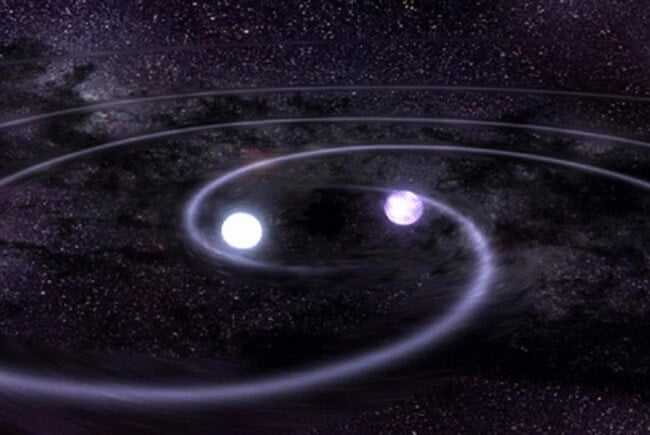- Get link
- X
- Other Apps

Most of the antimatter that fills the space of our Milky Way galaxy can be the remains of dead stars, say the results of a new study. According to scientists, their work is able to solve the riddle of astrophysics, which has existed for more than 40 years.
Each particle of ordinary matter has an antipode, an antimatter that has the same mass, but which has the opposite charge. For example, the antiparticle of a negatively charged electron is a positively charged positron. When particles and antiparticles collide, this leads to their annihilation (annihilation) and a powerful release of energy. Only one gram of antimatter, confronted with one gram of ordinary matter, can cause an explosion in which the level of energy release will be twice as high as when a bomb was dropped on Hiroshima.
More than 40 years ago, scientists first determined that the gamma rays emitted during the annihilation of positrons are released at this moment in all directions of the galaxy. On the basis of this discovery, it was assumed that every second within the Milky Way annihilation of 10 ^ 43 positrons occurs (a unit with 43 zeros). The same study indicated that the presence of most of these positrons was determined in the galactic center (central jumper), and not in the galactic disk itself, despite the fact that the jumper itself contains less than half of the entire mass of the Milky Way.
It was suggested that the source of the emission of these positrons is the radioactive material synthesized by the stars. However, over the next few decades, scientists have not been able to determine the type of stars capable of generating such an amount of antimatter. Later, another assumption was made: positron emission can create rare sources, like supermassive black holes located in most galactic centers, as well as particles of dark matter annihilating with each other.
"The source of these positrons is a mystery with more than 40 years of history. But to explain positrons, you do not need any exotic elements, like dark matter, "- says the leading author of the new study, Australian National University astronomer Roland Crocker.
In his opinion, this source can be supernovas - catastrophic explosions of stars, capable of generating a huge number of positrons. This, according to the scientist, is confirmed by the fact that these positrons were most often found.
Crocker focused his attention on supernovas, similar to the object known as SN 1991bg. This type of objects, as it turned out, is more common in other galaxies, but it is much less common than conventional supernovae. Unlike most conventional supernovae, capable of eclipsing almost all other stars in galaxies, the type of supernova being examined in the study does not produce a large amount of visible light and is considered very rare. And that is why, according to the researcher, so rarely found in the Milky Way.
Previous studies have suggested that a similar type of dim supernovae can appear when two white dwarfs merge. The latter have a very high density and represent the nuclei of dead stars (the size of the Earth), remaining after the stars completely exhausted their thermonuclear fuel and lost their outer layers. Most of the stars, including our Sun, will one day become white dwarfs.
Returning to the supernovae type SN 1991bg, it should be noted that they occur when two white dwarfs with a low mass collide, one of which is rich in carbon and oxygen and the other with helium. Despite its rarity among supernovae, this species is able to generate huge amounts of radioactive isotope, known as titanium-44. And it is he who distinguishes those positrons that were discovered by astronomers throughout the Milky Way.
At a time when most supernovae are born from young and massive stars, objects like SN 1991bg are most often found in regions where older stars of 3 to 6 billion years predominate. This age difference could explain why the previously discovered positrons were observed mainly in the central jumper of the Milky Way, where a large number of old stars are contained, rather than in an external galactic disk.
Crocker notes here that other sources may be the cause of the appearance of a certain volume of positrons.
"Although this is not necessary, given that objects such as SN1991bg are able to explain the entire phenomenology of positrons on their own. The latest data indicate that the source of positrons is closely connected with the center of the galaxy. In our model this is explained by the fact that the old stars are mostly scattered within a radius of 200 parsecs (about 650 light-years) around the galactic center in the form of a supermassive black hole. Nevertheless, it would be very interesting to consider the black hole itself as an additional source, "Kroker concludes.
The article is based on materials .
- Get link
- X
- Other Apps
Comments
Post a Comment